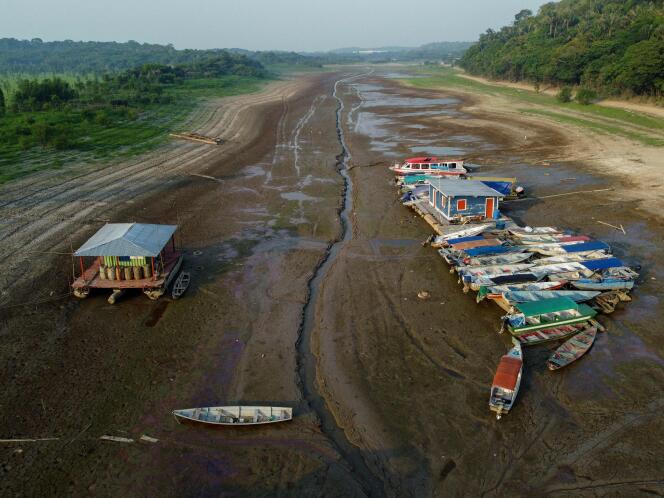Benedito Clemente de Souza can’t believe it. At 64 years old, this seasoned fisherman, respected leader of the community of Jurucua, in the heart of the Brazilian Amazon, ventured in recent days to the banks of the Rio Purus, a powerful tributary of the Amazon, which flows opposite its village. Surprise: instead of the usual three meters of depth this season, the watercourse barely reaches knee level.
“In several decades, I had never seen the river in such a state”, testifies this one, contacted by telephone. Located in the Médio Purus reserve, two hours by boat from the nearest town, the Jurucua community now fears finding itself literally cut off from the world. “The freight boats can no longer get through. Fishermen are unable to access fishing areas. Everyone here is very worried”says Benedito.
The village is just one of the many victims of the terrible drought which is now hitting the Amazon, between extreme heat and lack of rain, which many specialists already consider unprecedented. Amazon, Purus, Jurua, Madeira, Acre… all the major rivers of the forest are at their lowest. One example among others: that of the Rio Negro on which the city of Manaus is located. On Tuesday, October 10, its depth reached 14 meters: five less than last year.
At least 141 dolphins dead
In tributary rivers, the situation is even more worrying. Many are reduced to the state of muddy ponds or sandbanks, between which thin blackish streams of water meander. Biodiversity is the first victim. In several localities, crocodiles and thousands of fish have been found dead. On Lake Tefé, rising temperatures have led to the death of at least 141 freshwater dolphins.
The consequences are also human, particularly in the immense state of Amazonas, as large as three times the size of France, where Jurucua and Tefé are located. Almost everyone there has been placed on alert and the drought is already affecting up to 500,000 inhabitants. Navigation is disrupted on 90% of river lines, essential for the transport of goods and people. Twenty thousand children could find themselves deprived of schools.
In the jungle, many villages are deprived of medicine, fuel, food, drinking water and income. “The damage is enormous. People constantly need to travel by canoe to produce and trade”says Givanildo Freitas da Silva, leader of the local association of small producers of the Medio Jurua reserve in Amazonas, where the açai palm and andiroba nuts are grown, who fears that “years of investment are wiped out. »
You have 43.35% of this article left to read. The rest is reserved for subscribers.
